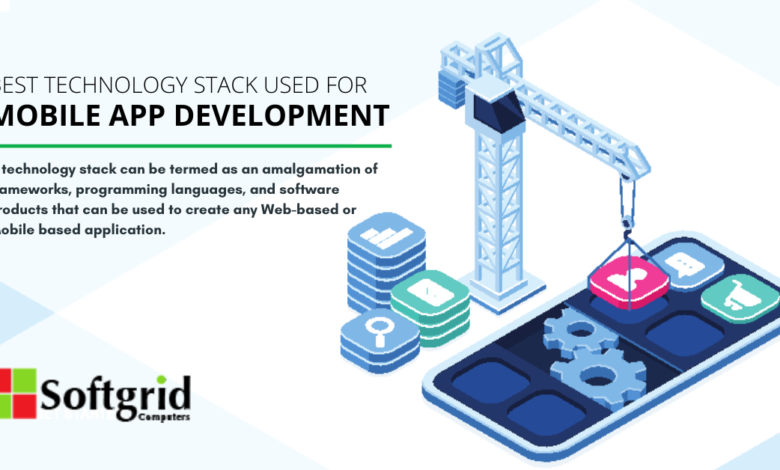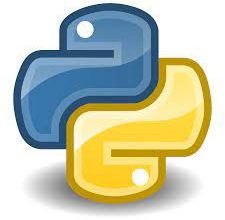Best Technology Stack Used for Mobile App Development
A technology stack can be termed as an amalgamation of frameworks, programming languages, and software products that can be used to create any Web-based or Mobile based application.

Quite rightly said that in this touch-based mobile device era, people need to think of ways to have a single technology stack designed to create unique experiences for different devices.
What is a Technology Stack?
A technology stack can be termed as an amalgamation of frameworks, programming languages, and software products that can be used to create any Web-based or Mobile based application.
Example: Let’s consider an example of Instagram. It’s a combination of the below technology stack:
- React Native iOS & Android apps
- Python (Django framework) & HTML5JavaScript -server-side
- Computing services -Amazon S3, Amazon, EBS, Amazon EC2
- Database -PostgreSQL
A technology stack comprises of four components:
Frontend Development – The first thing that any user experiences while interacting with the mobile app is an interface termed as Frontend Development. Thus, the frontend stack’s primary focus is user-friendly experience, accessible user interface, and clear internal structure
Skills & Tools Required : HTML, CSS, and JavaScript programming
Backend Development – A Back-end development basically refers to the segment that gathers the user input, builds and maintains the technology, converts to an output which finally enables the user-facing side of the website to exist and function.
Development Platform – The centralized place where interfaces and libraries come into play to design and develop the mobile application is defined as Development Platform
Additional – These are certain technical elements that affect application performance, compatibility, scalability security, and robustness.
Choosing the Best Technology Stack for Mobile App?
There can be multiple factors that must be accounted for while choosing the best technology stack for your Mobile App:
- Requirement analysis on the Mobile Application and its Goals
- Availability of developers, understanding Skillset of the team
- Functionality of the App and its compatibility
- Security considerations
- Compatibility on multiple devices.
Going for the best technology stack is likely to affect the immediate performance of the app and will speak out its future growth prospects.
Let’s take a deep dive towards understanding the top tech stacks that are in-charge of the development of robust, scalable, and top quality unique mobile and web apps.
WHY BUSINESSES PREFER MOBILE APPLICATION DEVELOPMENT COMPANY?
1. Native App Technology Stack
A native app, or a native application, is a software application that is built in a specific programming language keeping in mind a specific device platform, either iOS or Android. The Native Mobile apps need to be downloaded from App stores like Apple’s App Store or Google play since they do not operate in the browser.
The development of a Native app requires skills and technologies which are different than mobile website development. Native iOS apps are written in Swift or Objective-C native whereas Android apps are written in Java. Nowadays most companies invest in Android and iOS app development due to a great number of benefits offered in comparison to hybrid or cross-platform native mobile app development. Native software solutions are effortless to integrate with the whole ecosystem (like Apple or Google Pay or Google assistants), simultaneously providing users with exceptional speed, security, and compatibility.
Advantages of Native App Technology Stack
- Fast and Responsive
- Easy to tap into wide range of device functionality
- Match app UI/UX to platform conventions
Example: Several most popular apps in the market like Waze, Pokémon Go, and Twitter are driven out of fully native app technology Stack
Considering the Native app, we usually talk in the background of Android and iOS App development.
Mobile Game Advertising Platforms Provides Ad Network Development Solutions
Android Tech Stack:
Required Programming Languages: Kotlin and Java
Android Application development tools: Android Studio
Any Mobile Application development process requires proper analysis, countless decisions in order to facilitate life to a project.
However, if you want to focus on a larger share of the target audience by designing an android app you must hire dedicated android developers with the knowledge and hands-on experience on the following technology stack:
Java & Kotlin: Java is a high-level, object-oriented, general purpose programming language that is most dominantly used. Being an open-source language, it offers android developers assistance to rich libraries and tools to facilitate the implementation hence shortening your time-to-market. Giants like Google & Yahoo keep enhancing this programming language. Android developers prefer using Java because of its following features:
- Capability;
- Security
- Scalability and portability
- Self-operative memory management
- Functionality
Any android application development company can easily rely on Java language which further makes it one of the best technology stacks for mobile app development.
On the other hand, Kotlin has become a more stable option for Android studio. There are a few limitations with Java that hinder the API design. Kotlin is undoubtedly clean, lightweight, and much less loquacious is making it a solution to all the Java problems.
Also, Kotlin is a more advanced programming language than Java. It allows Android application developers to release the build faster by writing minimum code. Thus, it is considered as a key component of the Android tech stack.
Android Studio Toolset: As the name suggests Android studio enables developers to design applications for the Android operating system. It offers required libraries for code editing, debugging, performance tools, and instantly deploy the system.
Essential command-line tools for Android application development are clustered into three packages:
- Android SDK tools: Example Android SDK Manager
- Platform tools: Example Android Debug Bridge (adb)
- The Android Emulator
Apart from Android-specific coding support, Android Studio Toolset allows the android developer to use different on-device debugging tools, UI builder, and scriptable automation support.
IOS Tech Stack
Required Programming Languages: Swift and Objective-C
IOS Toolkit: XCode and IntelliJ AppCode
Apple XCode can be chosen if you are using Swift as a programming language for the iOS app development,
XCode is a kind of user interface development IDE supported by Apple. It facilitates them to develop native apps and launch them on Apple’s store. It supports all the Apple devices starting from iPhone, Mac, iPad, Apple Watch, and Apple TV.
How Flutter is transforming Mobile App Development
2. Hybrid App Tech Stack
Mobile versions of any Web Applications can be termed as Hybrid App Technology Stack. Hybrid apps can be developed using CSS, HTML5, and JavaScript. They can work on any platform while acquiring device storage and camera and providing access to APIs. Some popular mobile app frameworks are Cordova, Sencha Touch 2, and Ionic.
Advantages of Hybrid App Tech Stack
- Easily Portable
- Single Code Base Development
- Multi-platform Compatibility
- Robust
- Cost-efficient
- Access to multiple hardware/software proficiencies
10 Best Mobile App Development Tools in 2020
3. Cross-Platform App Tech Stack
A cross-platform developer uses one code base, so you can develop the applications for multiple platforms – Android, iOS, Windows, and the web.
Cross-platform mobile app development is preferred by Businesses as the overall business profit relies on two factors:
- vast demographic coverage
- less development cost.
Advantages of Cross-Platform App Tech Stack
- Affordability
- Code reusability
- High development speed
- Simple to launch and update
- Multiple platform coverage
The cross-platform applications can be developed in Flutter, React Native, and Xamarin.
Mobile app development –The future of the business world!
WRAP UP
There are a lot of tools and technologies available in the market such as C++, Java, Python, Objective C, Swift, XCode, Kotlin, AppCode that support the development of any mobile application.
The Selection of the right combination of tools and technologies that lies within the budget can pave a path for creating a robust mobile app.



